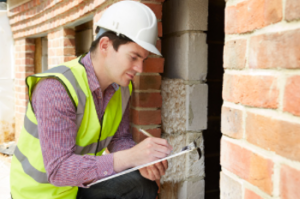Building codes establish minimum standards for building design, construction, use and occupancy to safeguard life, limb, health and property. Local departments of buildings enforce building codes by reviewing plans for approval before construction commences and issuing permits when appropriate, conducting regular onsite inspections during construction, and investigating reports of noncompliance.
-
 Inspect the Roof
Inspect the Roof
Since roofing is one of the key elements in any structure, it must be inspected before further development. Usually, this takes place following the framing and rough-in inspection.
Adelaide building code compliance inspections inspect for insulation and vapour retarders, flashing at wall-roof intersections and other items to verify compliance with code requirements. Furthermore, inspectors will conduct a blower door test on new construction to ensure its radon system and thermal envelope comply with current energy codes.
Compliance with building codes is of utmost importance to maintain facilities’ safety and functionality. Failure to abide by building code regulations could result in fines and even the closure of facilities; as a result, proactive steps must be taken when dealing with building code issues.
- Inspect the Exterior
Building codes ensure that homes and businesses conform to a uniform set of minimum safety standards. Their use by designers as reference books, building departments as a basis for issuing construction permits, and inspectors as verification tools is key in meeting compliance with building codes.
However, builders and inspectors sometimes disagree on interpreting certain codes, making communication with inspectors challenging. Builders need to be familiar with which regulations they operate under to prevent miscommunication with inspectors; building code violations can incur heavy fines or even cause the closure of facilities, so any issues must be corrected before becoming issues.
- Inspect the Foundation
An essential step in building code compliance and maintaining the structural integrity of homes is inspecting their foundation regularly, seeking professional assistance as necessary and conducting regular inspections to prevent moisture infiltration that could potentially cause costly repairs. By performing regular inspections and seeking professional help, homeowners can avoid moisture infiltration, which could damage their homes and necessitate costly repairs.
Adelaide building code compliance inspections must be performed after digging trenches, grade stakes installed, reinforcing steel installed, and waterproofing, drain tile or backfill completed before pouring concrete. These checks also include inspections for waterproofing systems such as drain tiles or waterproof membranes installed before casting concrete.
- Inspect the Plumbing
Building codes provide minimum standards for the design, construction, materials quality, use and occupancy, as well as maintenance of buildings. They are relied upon by architects, engineers, interior designers, builders, contractors, facility managers and others when judging a structure’s safety.
- Inspect the Electrical System
No one should begin work on a home or addition without first consulting and receiving approval for its electrical wiring from an independent electrical inspector.
An inspector will visit your house to examine the number and size of circuits about power needs and the location and condition of electrical boxes.
- Inspect the Heating and Cooling System
Code compliance inspections are integral to ensuring your building complies with minimum construction standards that safeguard lives and property. Failure to get this done could lead to fines and even result in the demolition of your structure if not conducted on schedule.
Avoid this scenario by engaging the services of a professional HVAC service company to inspect for you. They will review the heating and cooling systems to ensure they were installed correctly and are functioning appropriately and inspect all vents and flues to ensure safety measures are in place.
- Inspect the Fire Protection System
Fire protection features in buildings are designed to safeguard their occupants and reduce fire-related damages, typically using sprinkler and smoke control systems.
Maintenance and servicing are integral elements of code compliance inspections. Hanging items from fire sprinkler heads is an obvious violation as this impedes their activation quickly.
- Inspect the Ventilation System
Your building’s ventilation system ensures occupant health by trapping dust, pollen and odours instead of inhaling them, providing fresh, clean air and keeping dust at bay.
A building code compliance inspections of your ventilation system involves closely inspecting intakes to make sure they’re not blocked, as well as exhaust locations. Conducting periodic reviews of this inspection process can save money on costly repairs while keeping employees safe.